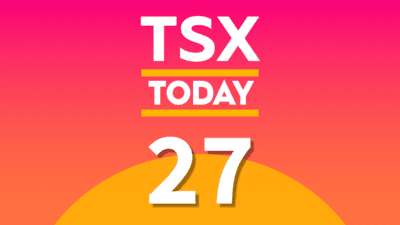It’s fashionable to bash big banks in Canada. But in fact, investors rely on these entities to provide consistent returns every year. Here’s what five of Canada’s big banks offer investors.
1. Bank of Montreal
Bank of Montreal (TSX: BMO)(NYSE: BMO), Canada’s fourth-largest lender, is sitting near its 52-week high. It had record annual profit of $4.2 billion for fiscal 2013. This was up 0.9% from 2012.
For the first quarter ended January 31, 2014, it reported net income of $1.06 billion, or $1.58 per share, on a reported basis. The bank reported net income of $1.08 billion, or $1.61 per share, on an adjusted basis. Canadian personal and commercial banking net income was $484 million, an increase of $37 million, or 8%, from the year prior. Adjusted net income was $486 million, an increase of $36 million, or 8%, from the prior year.
Bank of Montreal declared a quarterly dividend of $0.76 per share for Q1 fiscal year 2014. This represents an increase of $0.02 from the prior quarter.
2. The Bank of Nova Scotia
The Bank of Nova Scotia (TSX: BNS)(NYSE: BNS), Canada’s third-largest lender, has paid dividends since 1990. This past March it declared a dividend of $0.64 per share. This is an increase of $0.02 from the last dividend paid.
The bank is purchasing a 20% interest in the financial services business of Canadian Tire. This gives it an open door to Canadian Tire’s customers. Bank of Nova Scotia CEO Brian Porter said, “the partnership here is an important one because Canadian Tire is an iconic company, it’s a company that has similar culture and values to the bank. We’re investing in a high-performing business that fits into our strategy.”
3. Canadian Imperial Bank of Commerce
Canadian Imperial Bank of Commerce (TSX: CM)(NYSE: CM) may see profits down when it reports its Q2 2014 results. Bloomberg reported this week that it “will probably post its first profit decline in more than four years after selling half of a key credit-card business and taking a writedown on its Caribbean banking operations.”
However, Canadian Imperial continues to reward shareholders. It announced in February that its board of directors declared a dividend of $0.98 per share on common shares for the quarter ending April 30, 2014. This represents an increase of $0.02 over the prior dividend.
For 2013, it reported annual net income of $3.6 billion, or $8.78 per share, on an adjusted basis, versus $3.4 billion, or $8.07 per share, the year prior. The bank’s revenue increased to $12.8 billion from $12.5 billion.
4. Royal Bank of Canada
Royal Bank of Canada (TSX: RY)(NYSE: RY) is also rewarding investors who seek dividend income. It announced in February an increase to its quarterly common share dividend of $0.04 per share, or 6%, to $0.71 per share. For Q1 2014 Royal Bank had net income of $2.09 billion. This was up 2% from $2.04 billion in Q1 2013.
For 2013, Royal had record earnings of $8.4 billion. This represented an increase of 12% from 2012. It had record earnings in both personal and commercial banking, and wealth management and capital markets. It had higher earnings in investor and treasury services.
Royal Bank has No. 1 or No. 2 market share in all product categories in Canadian banking. Additionally, it is one of the largest bank-owned insurance companies in Canada.
5. Toronto-Dominion Bank
Toronto-Dominion Bank (TSX: TD)(NYSE: TD) is the sixth-largest bank in North America by branches. For Q1 2014, its Canadian retail segment adjusted earnings increased 5% year-over-year. For Q1, its U.S. retail segment adjusted earnings in U.S. dollars increased 8% year-over-year. The bank had Q1 2014 adjusted net income of $2 billion. This was an increase of 6% year-over-year.
TD’s premium earnings mix is based on a North American retail focus. In addition, for 2013, its wealth business, which includes TD Ameritrade, delivered record earnings of $937 million.
In February, TD Bank announced a dividend of $0.47 per common share. This represents an increase in the quarterly dividend of $0.04 (9%) versus the prior quarter.
Despite popular sentiment, bashing the banks is a bad call. It’s no use fretting and fighting over what Canada’s big banks are doing. They are cash-generating machines that consistently dole out returns to investors who stick with them for the long haul.







